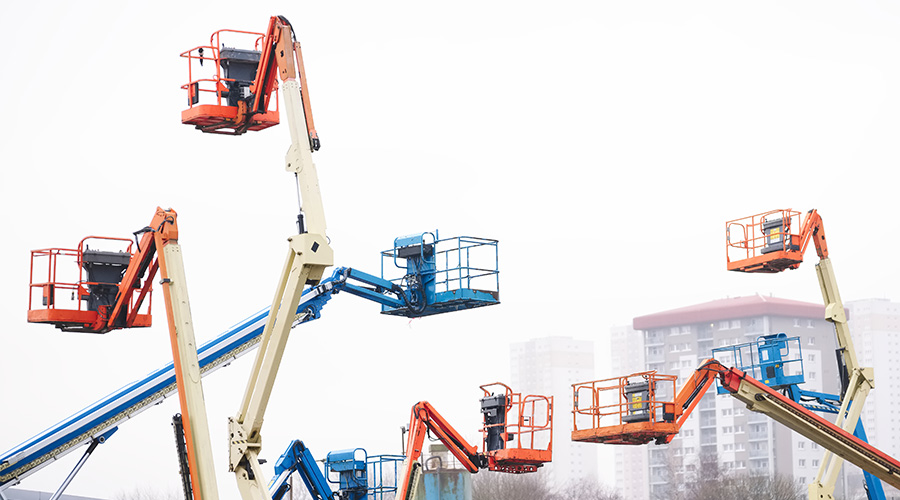 Before operators use an aerial work platform, they need to familiarize themselves with the lift safety standards to protect themselves and coworkers.
Before operators use an aerial work platform, they need to familiarize themselves with the lift safety standards to protect themselves and coworkers.Lift Safety: Specifying The Proper Aerial Work Platform
There are numerous options when it comes to specifying lifts. Managers who base their decision off of a jobsite assessment and the specific task at hand, will be able to make an easier decision when it comes time to chose a lift.
Lift specification
Once they understand the specific challenges of the job site, managers can specify the most appropriate aerial work platform for the task.
“There is a vast range of different types of aerial lifts on the market,” says Matthew Elvin, CEO with Snorkel. “Managers should seek guidance from their aerial lift supplier — whether a manufacturer, distributor or rental company — on making sure that the equipment they have specified for the job provides a safe method of working at height taking into account the location, conditions, work height and lifting capacity, to name but a few.”
With so many options, the choice of which lift to use for a particular task can present challenges. Answering the following questions about the tasks to be performed and job site conditions can help narrow the choices, Dovey says:
- Will the work be performed indoors or outside?
- Will the task require more than one worker?
- What materials and tools will the lift need to hold?
- What is the working height of the job?
- Does the machine need to go up steps or into an elevator to reach the job site?
- Does it need to fit through doorways or another narrow opening?
What are the conditions at the job site? Is the surface uneven? Are there obstacles to work around?
“Bigger is not always better,” Elvin says. “It is very important that aerial lift users specify a lift that is designed for the job. There is a vast selection of aerial lifts available, with many that are designed for specific purposes, such as low level lifts or narrow lifts with low ground pressure. Those specifying lifts should work with a supplier who can provide expert advice and access to a wide selection of equipment.
“Choosing the right lift will not only provide a safer method to work at height but potentially will reduce rental or purchase costs and increase productivity.“
Related Topics:














